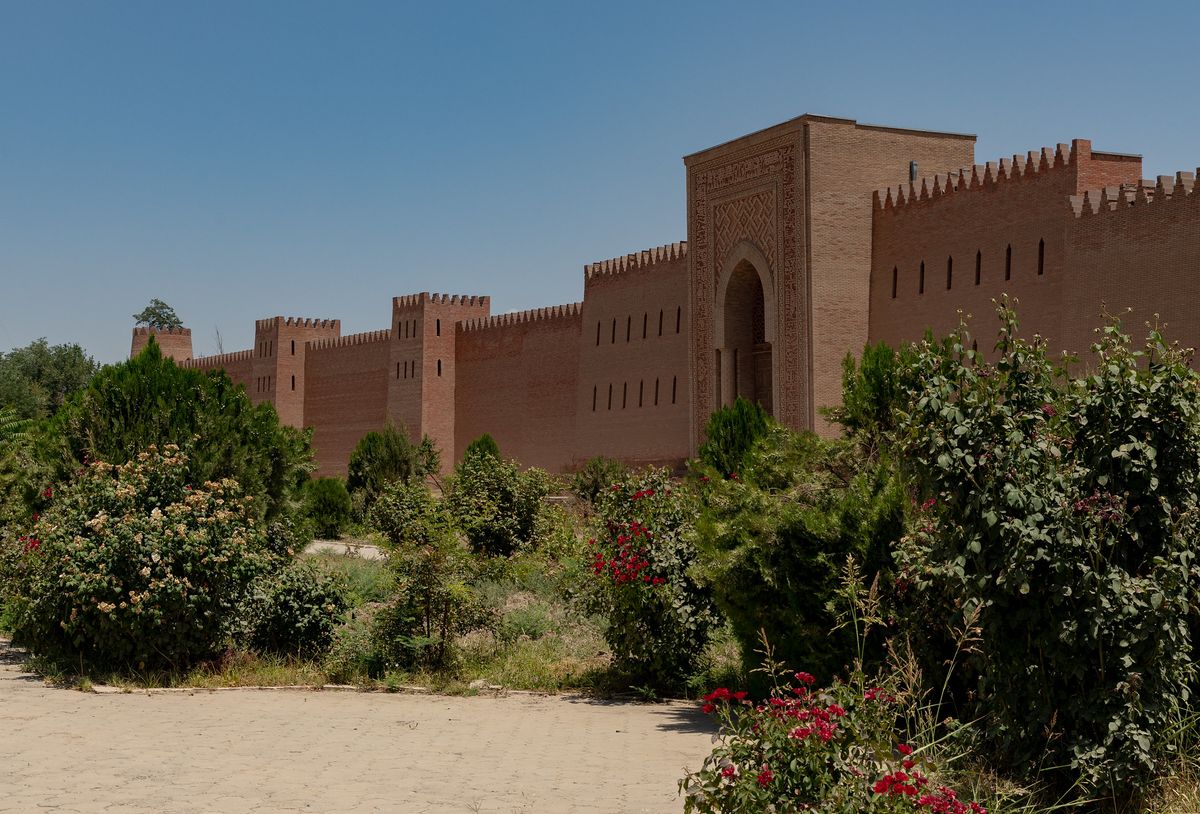Wondermondo 🢖 World 🢖 Wonders of Asia 🢖 Wonders of Tajikistan
Territory
Wonders of Tajikistan
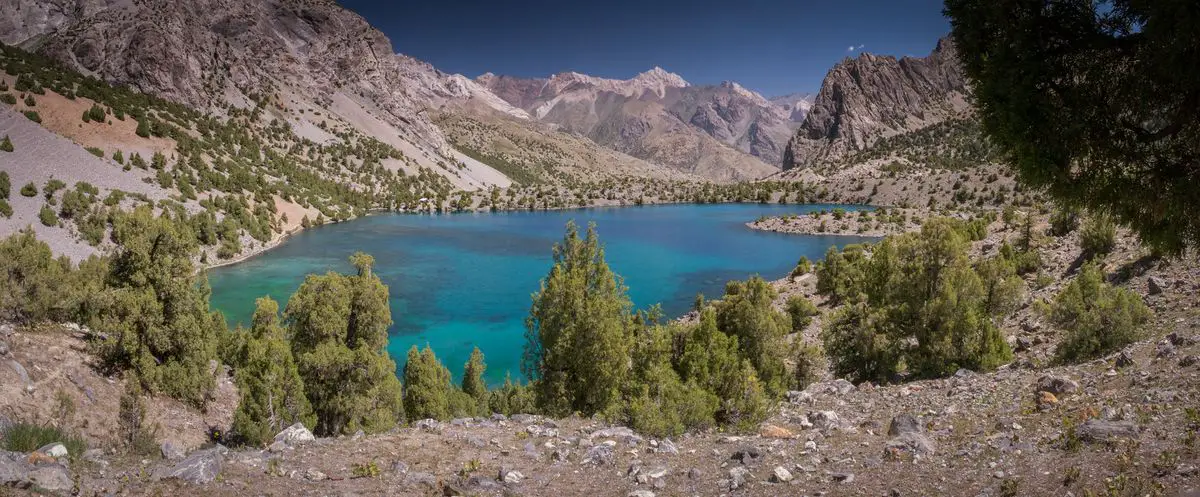
 Highlights
Highlights
The mountainous country of Tajikistan holds many secrets and unusual monuments. It was crossed by the great trade routes of antiquity. The endless mountains of Pamir constituted one of the most extreme and memorable parts of the long journey between different parts of the world with numerous legends still alive and even more – forgotten and may be – waiting to be rediscovered.
The extreme landscape of remote mountain valleys has served as a unique repository of little-known cultures (Yaghnobi, Pamiri people) and less-known beliefs and religions. These people live with their secrets (according to local stories – sometimes in a form of hidden ancient books) among us.
Map with the described wonders
If you see this after your page is loaded completely, leafletJS files are missing.
 Top 25 wonders of Tajikistan
Top 25 wonders of Tajikistan
Geological wonders
Hodja Mumin salt dome
Khatloni
One of the largest salt domes in the world. It rises 900 m above the surrounding plain and is approximately 8.5 km wide. At places up to 500 m high vertical walls of salt. Here are more than 30 billion tons of salt. Contains constantly changing caves up to 350 m long, wind emits sounds in these caves as it passes through the thin stalactites of salt.
Garm-Chashma
Kuhistoni-Badakhshon
A sacred place for Garm people (there was a sanctuary above the springs) – a travertine mound with 400 m wide terraces formed by thermal springs. Here are located nine – ten spouting springs with 0.1 – 1.2 m high fountains, the temperature of the water is roughly 59° C. At the end of the 19th century here still were found geyser pearls. Water has powerful healing properties, especially for diverse forms of dermatitis.
Kuhi-Malik Fiery Caves
Sughd
Unique caves formed by a natural fire in coal layers. Earth here still is scorching hot. Some specialists consider that these fires may have served as inspiration to Zoroastrian religion.
Ladzhuar-Dara lazurite mine
Kuhistoni-Badakhshon
Legendary, nearly inaccessible and for long centuries secret mine of high quality lapis lazuli – lazurite. It is extremely hard to access, thus adding value to this gemstone. Rediscovered in the 1930ies.
Fedchenko Glacier
Kuhistoni-Badakhshon
The largest glacier of the world outside polar regions. Narrow, 77 km long, and up to 1,000 m thick flow of ice.
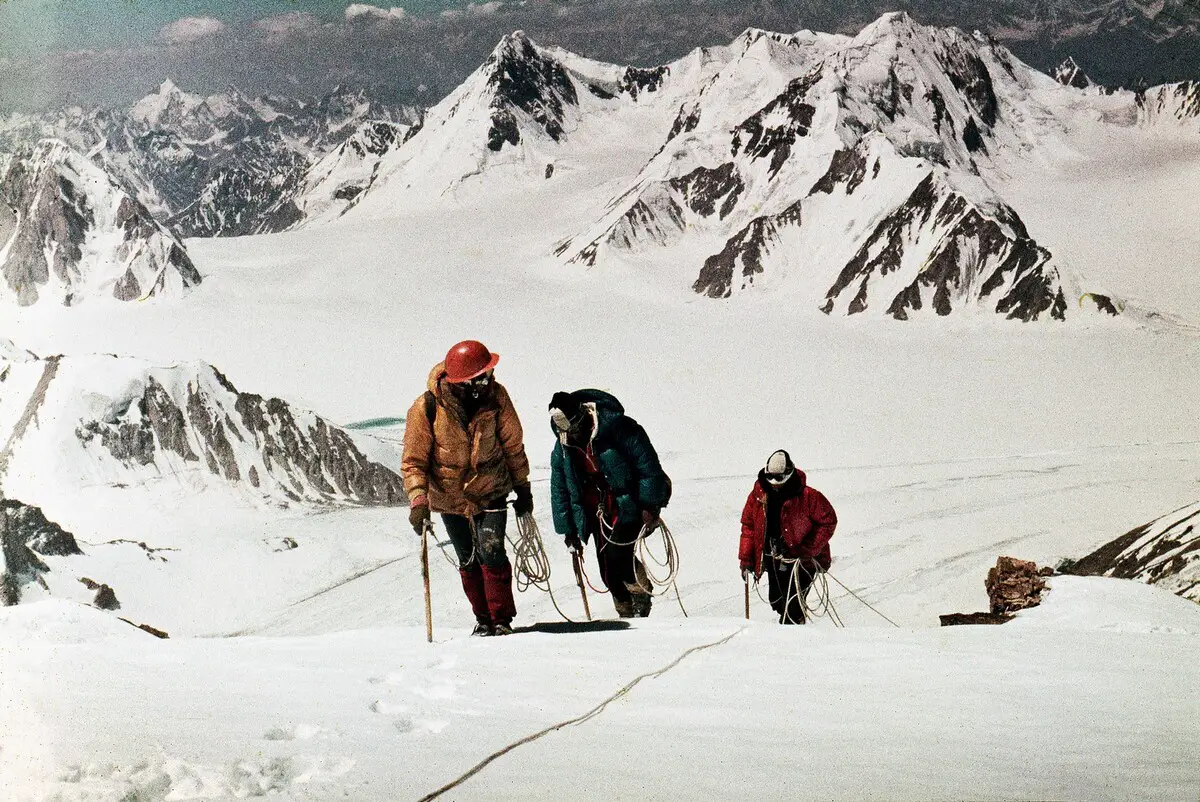
Usoi Dam and Sarez Lake
Kuhistoni-Badakhshon
An earthquake in 1911 created the tallest natural dam in the world – the Usoi dam which is 550 m tall and 3 km long. It dammed the Murghab River and as a result, formed Sarez Lake, a 505 m deep, 56 km long lake. It may cause extreme floods in the case of the next earthquake.
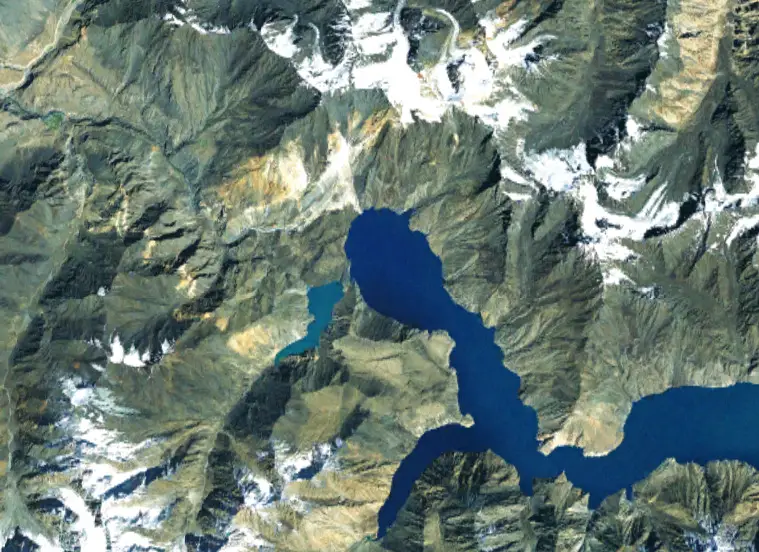
Chirak Tash rock
Kuhistoni-Badakhshon
Legendary rock of limestone. According to the legend in the large natural arch in the upper part of the rock during nighttime was lighted a fire for the orientation of caravans passing the lifeless, otherworldly Valley of Tornadoes – Markansu Desert.
Kukh-i-Lal mine
Kuhistoni-Badakhshon
Ancient mines that are up to 50 m deep. The best find of gemstone quality clinohumite – transparent stones in the color of fire. Clinohumite here is found together with another very valuable gemstone – spinel – that was mined here since the 8th century AD.
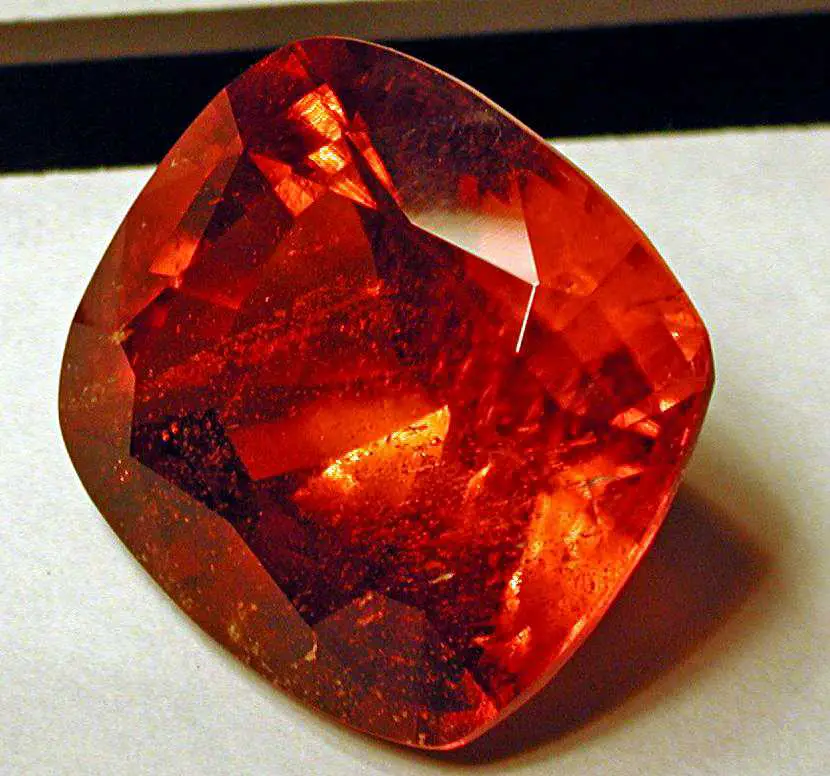
Chartym landslide
Kuhistoni-Badakhshon
A landslide here has created a beautiful attraction – 200 m long rapids of Gunt River with numerous waterfalls.
Mount Chapdara north-eastern wall
Sughd
Very impressive, up to 1,500 m tall nearly vertical wall of Mount Chapdara (5,050 m).
Khoja Sangkhok mineral springs (Anzob mineral water)
Sughd
Highly carbonated springs at 3,030 m height. Spring water contains so much hydrocarbon that the water seems to be boiling.
Biological wonders
Shirkent dinosaur footprints
Region of Republican Subordination
Three sites with more than 400 dinosaur footprints left on limestone surfaces. Footprints are left by Macropodosaurus gravis and several Tridactylous. Numerous other interesting fossils.
Growe of Pamirian winterfat in Western Pshart ravine
Kuhistoni-Badakhshon
Pamirian winterfat (Krascheninnikovia ceratoides) here grows over several hundreds of hectares. Plants are several centuries old and have grown 2 – 3 m tall (elsewhere even a 1 m tall plant is considered to be huge).
Archaeological wonders
Sarazm
Sughd
Remnants of a unique ancient city. The initial settlement existed here in 3,400 – 2,000 BC, it developed as a copper metallurgical center. Sarazm was abandoned as Indo-Europeans came here but a new city developed around 1500 BC. This city served as a trade and shipment center for turquoise that was mined nearby.
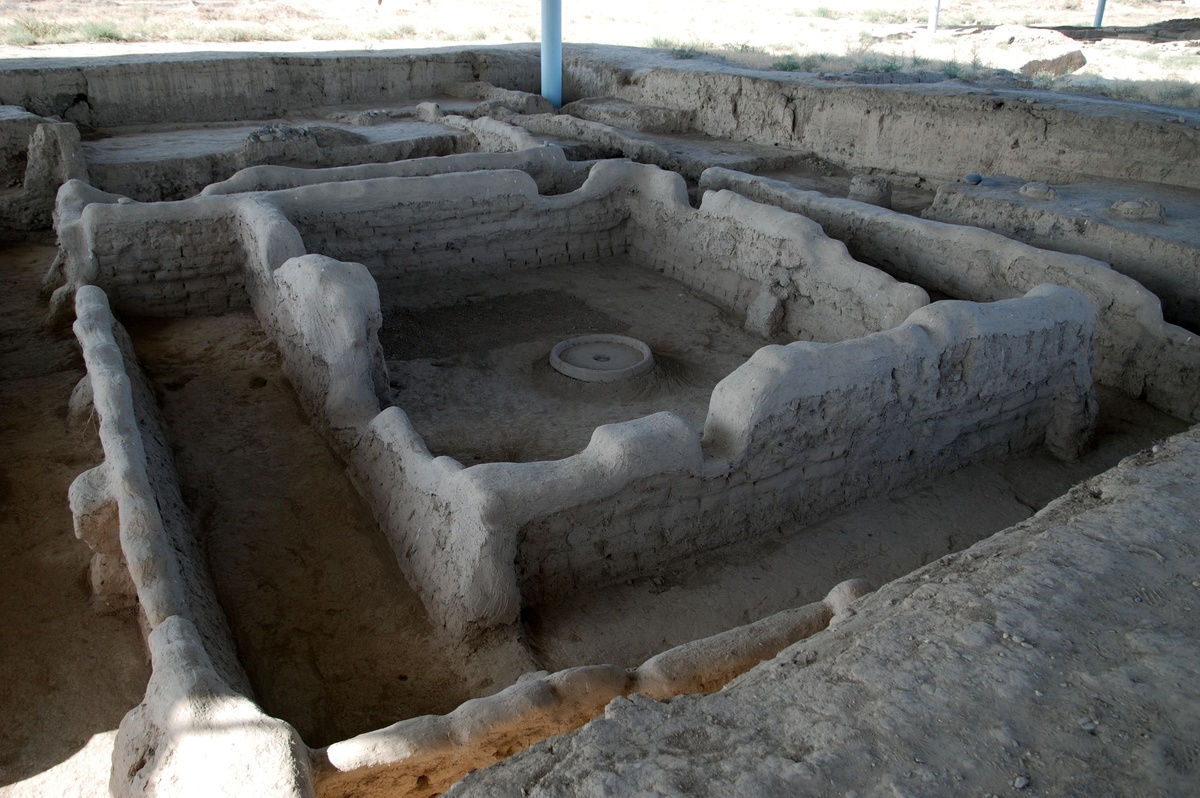
Old Istaravshan (Kurukada)
Sughd
An ancient city, established around 500 BC when three ringwalls were built around it. On Mugh Hill in the center, there are ruins. The city flourished also in the 13th – 16th century AD and the 18th century. Valuable buildings – remnants of city walls and mighty gates, Kok Gumbaz mosque.
Shurali geoglyphs and Kaltatur geoglyphs
Kuhistoni-Badakhshon
19 large figures consisting of 6 – 13 m long triangles and rectangles, ornamented with white and black rocks. Could be made in the 8th – 3rd century BC. Nearby are located large kurgans.
Kaakhka-Kala fortress (Ka’akh-Ka)
Kuhistoni-Badakhshon
Impressive remnants of a large fortification (750 x 280 m) built in the 3rd century BC, used until the 7th century AD. Walls are up to 8.6 m high, and 8 – 12 m wide, there are 56 towers.
Architecture wonders
Yamchun fortress (Zulkhomar)
Kuhistoni-Badakhshon
Large fortress of a triangular form. It consists of several parts and has up to 9 m high walls, and some 30 – 40 towers. Here have been found artifacts from the 3rd century BC to the 11th century AD.
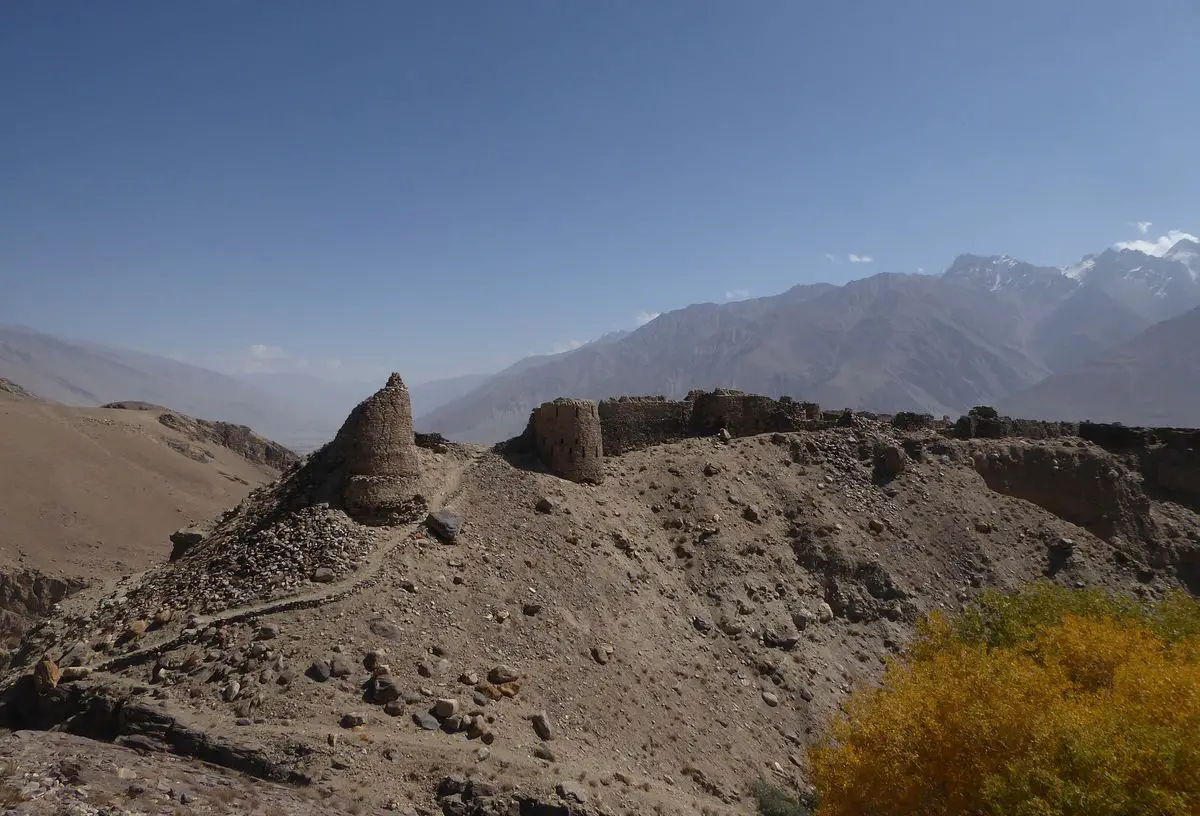
Khazrati Shoh Mausoleum (Mausoleum of Amir Khamza Khasti Podshoh)
Sughd
Unique monument of architecture – square wooden mausoleum from the 10th – 11th century AD with intricate carvings, enclosed into a later adobe building.
Hodja Nashron Mausoleum
Region of Republican Subordination
Mausoleum with beautiful brickwork, built in the 11th – 12th centuries AD.
Khulbuk Fortress
Khatloni
This governor’s palace was built in the 9th – 12th centuries AD. Palace was enclosed with a 12 m high wall. Beautiful entrance portal with intricate carvings.
Sitora-I Mokhi Khosa
Region of Republican Subordination
Remnants of a beautiful castle that was built in the 17th – 19th centuries, the summer residence of khans of Bukhara. Demolished in 1918 – 1933, partly restored later.
Kafyr-Kala fortress (Kafyrkala)
Khatloni
Enclosed in a 360 x 360 m large walled area, this early medieval Kushan city flourished in the 6th – 8th century AD. Includes a small Buddhist temple with murals.
Nurek Dam
Khatloni, Region of Republican Subordination
Currently, this is the highest embankment dam in the world. The dam is 300 m high and 700 m long, constructed in 1961 – 1980. The dam stands on the Vakhsh River and its total output is 3 GW. This covers 98% of the needs of Tajikistan.
Mausoleum of Hoji Muhammad Bashoro
Sughd
A good example of medieval Central Asian architecture, built in the 11th – 12th centuries AD. Named after an important Islamic scientist although it is not sure whether he is buried here.
 Recommended books
Recommended books
Tajikistan and the High Pamirs: A Companion and Guide
Fringed by the two great rivers of Central Asia, the Oxus, and the Jaxartes, Tajikistan can boast not only breathtaking mountain scenery but also 3,000 years of history.
Tajikistan (Bradt Travel Guide)
This new, thoroughly updated second edition of the most practical guide to Central Asia’s smallest and least understood country brings to life the ‘Roof of the World’: Tajikistan. Enhanced trekking details and maps are included, along with more detailed practical information than any other guidebook. Traveling to and entering Tajikistan is easier than ever before with improved transport infrastructure and a new airport terminal in the capital, Dushanbe. Accommodation options in the capital have also improved with new high-end hotels now open for business. This new edition includes details of all such changes and improvements.

